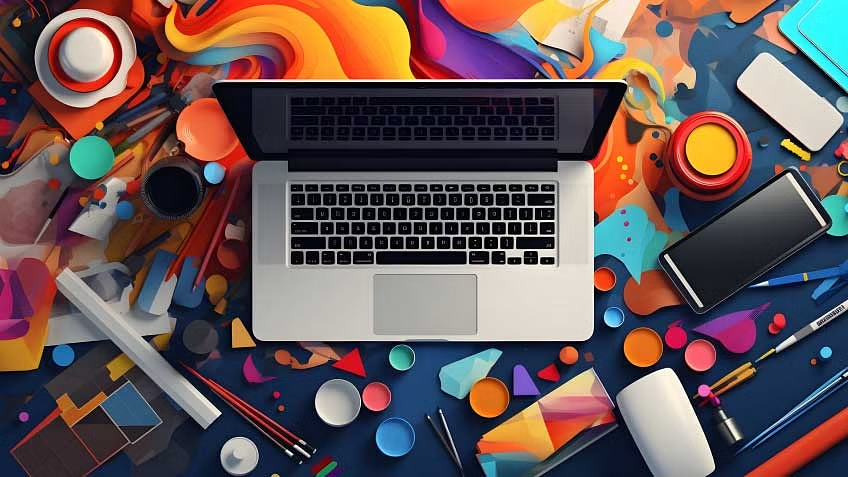In today’s visually-driven world, graphic design plays a pivotal role in shaping our perceptions, conveying messages, and influencing behavior. From logos and branding to advertisements and digital interfaces, graphic design is omnipresent, serving as a powerful tool for communication and expression. In this blog post, we’ll explore the multifaceted world of graphic design, its principles, applications, and the impact it has on our daily lives.
What is Graphic Design?
Graphic design is the art and practice of visual communication that combines text, images, and elements to convey ideas, information, and emotions effectively. It encompasses a wide range of mediums, including print, digital, and multimedia, and serves various purposes, from branding and marketing to education and entertainment.
Key Principles of Graphic Design:
- Balance: Achieving visual equilibrium by distributing elements evenly within a design, whether symmetrically or asymmetrically, to create harmony and stability.
- Hierarchy: Organizing content in order of importance to guide the viewer’s attention and convey the message effectively. Establishing a clear hierarchy helps users navigate and digest information more easily.
- Typography: Selecting appropriate fonts, sizes, and styles to enhance readability, convey tone, and reinforce brand identity. Typography plays a crucial role in shaping the overall look and feel of a design.
- Color Theory: Understanding the psychological and emotional effects of color and using it strategically to evoke specific reactions and convey meaning. Color choices can influence perception, mood, and behavior.
- Contrast: Creating visual interest and emphasis by juxtaposing elements with differing characteristics, such as size, color, shape, or texture. Contrast helps draw attention to key elements and adds depth to a design.
- Alignment: Ensuring that elements are positioned relative to each other in a coherent and visually appealing manner. Proper alignment creates order and cohesion, making the design more polished and professional.
- Repetition: Using consistent visual elements, such as colors, shapes, and patterns, throughout a design to establish a sense of unity and reinforce brand identity. Repetition enhances recognition and reinforces key messages.
Applications of Graphic Design:
- Branding: Creating visual identities that reflect the essence, values, and personality of a brand. Logos, color palettes, typography, and imagery are essential elements of branding that help differentiate a brand and foster recognition.
- Marketing and Advertising: Designing promotional materials, such as advertisements, brochures, posters, and banners, to attract and engage audiences. Effective marketing design communicates key messages, promotes products or services, and drives conversions.
- Web and UI Design: Crafting user-friendly interfaces and digital experiences that facilitate navigation, interaction, and engagement. Web and UI design involve creating layouts, wireframes, and visual elements that optimize user flow and usability.
- Print Design: Designing printed materials, such as magazines, newspapers, books, and packaging, that inform, educate, or entertain audiences. Print design requires careful consideration of layout, typography, and color for optimal readability and impact.
- Motion Graphics: Creating animated visuals and graphics for video content, presentations, and multimedia projects. Motion graphics add dynamism and visual interest to static designs, enhancing storytelling and engagement.
The Impact of Graphic Design:
Graphic design shapes our perceptions, influences our decisions, and enriches our experiences in countless ways. Whether it’s the logo of a beloved brand, the layout of a favorite magazine, or the interface of a user-friendly app, graphic design surrounds us and enhances our daily lives. It bridges language barriers, communicates complex ideas, and evokes emotions, making information more accessible and engaging to diverse audiences.
In conclusion, graphic design is a powerful form of visual communication that transcends boundaries and enriches our world. By mastering the principles of graphic design and leveraging its applications, businesses, organizations, and individuals can create compelling, memorable, and impactful designs that resonate with audiences and leave a lasting impression.
